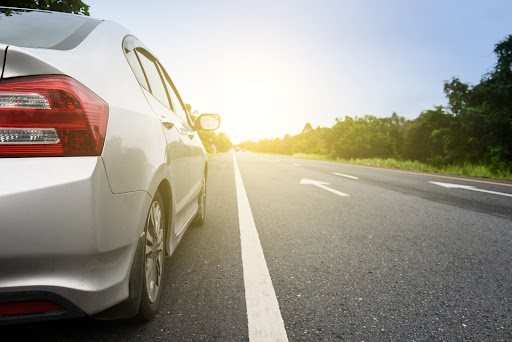
Whenever you are behind the wheel of a car, you should always obey traffic laws and drive safely. Limit the number of distractions and always keep an eye on your surroundings. If you are approaching a school zone, you have an even greater duty to be safe. Any time you are driving where children could be present it’s essential to pay even more attention to your surroundings. Do not use your phone, speed, or take your eyes off the road when driving in school zones.
If you or your child sustained injuries in a school zone due to a negligent driver, you could have the right to pursue a Washington injury claim against them.
Statistics on Driving Safety in School Zones
Zendrive analyzed school zone statistics across the country, using data from the National Center of Education Statistics (NCES) for both public and private schools. Here are some of the most notable findings when it comes to school zone accidents:
- Road safety and driver behavior in cities and suburbs saw the worst decline from 2017 to 2018;
- City school roads, on average, are four times more dangerous than school roads in rural areas;
- The worst hours for accidents are between 7 AM and 8 AM and between 3 PM and 4 PM; and
- Nine of the ten most dangerous schools are located in rural areas near busy streets.
Some of the most unsafe events during the research period include using the phone while driving, speeding, rapid acceleration, and hard braking. To help you stay safe on the road, here are five essential safety tips for Washington drivers.
1. Always Drive Under the Washington School Zone Speed Limit
Drivers must adhere to the law and obey all schoolzone signs. According to RCW 46.61.440, the maximum speed limit in a school zone is 20 miles per hour. Some places may have additional signs that say, “only when children present” or “only when lights flashing,” which has confused some drivers. It’s not worth risking a potential ticket or injuring a child because you assume the speed limit doesn’t apply in the summer or after traditional school hours either.
Always err on the side of caution, and drive under the speed limit. Don’t assume that you are ok to speed if you don’t see any police around. For example, the City of Seattle uses speed cameras when lights flash on either end of the school zone. These cameras are part of the Vision Zero campaign. This campaign is a countrywide initiative where some cities pledge to eliminate traffic fatalities by 2030.
2. Don’t Use Your Cell Phone While Driving
We can’t stress enough the importance of disconnecting from your phone when driving. You might think taking your eye off the road for a second to read a notification that arrived is ok. However, it takes only a split second for a child to dart out on the road. You might not see someone in a crosswalk or a car pulled over. You shouldn’t be on your cell phone while driving, but it’s extra important to avoid this dangerous distraction in a school zone.
An earlier study by Zendrive revealed that phone use while driving increases your chance of an accident by as much as 20 times. There’s significant room for improving driver safety in school zones. One in three drivers demonstrated unsafe behavior when dropping off or picking up their children. Despite the risk of injuring or killing a child, 88% of drivers still used their phones while driving in school zones.
3. Expect Additional Traffic in a School Zone
You should anticipate that there will be additional traffic in school zones, especially during peak pick-up and drop-off times. Be extra vigilant if you drive through school zones any time between 7 AM and 9 AM or between 2 PM and 4 PM These are typically the busiest times as parents drop off and pick up their kids.
4. Watch for School Buses When Driving in School Zones
In addition to cars, drivers need to pay attention to school buses coming and going. You should always yield the right of way to a school bus. If they deploy their stop sign and put on flashing lights, you should not pass the bus.
This tip goes for school buses you encounter anywhere on the road, not just in school zones. The bus is picking up or dropping off children, which means there is a risk of someone running out into the street. Depending on the area, it’s not uncommon for buses to pick up and drop off at children’s homes.
5. Watch for Crosswalks in and Near School Zones
It’s not uncommon to find more crosswalks in school zones than other stretches of the road. You should always watch for crossing guards here as well. You often find them manning crosswalks on busy streets. They have the legal authority to stop traffic to safely let children and their parents cross the road. If you see a crossing guard, you need to follow their instructions, no matter what the signal light or traffic sign instructs you to do in this area.
Don’t be surprised to see police cars in school zones, especially near crosswalks. Their presence can hopefully help reduce the number of injury accidents at the school.
Contact a Washington Personal Injury Lawyer
Adhering to a school zone speed limit can help keep everyone safe. It can also save you a lot of money. Fines and penalties for school zone violations can be pricey. The current fine for a school zone speed infraction in Seattle is $237.
If another driver’s negligence caused injury to your family, let us help you pursue a claim. We have over 40 years of experience assisting injured victims in Washington. We strive always to provide the best representation possible and fight for the compensation you deserve. It’s important to hold negligent drivers responsible for their actions, especially for accidents while driving in school zones. Hopefully, you can keep another family from experiencing the same turmoil your family is experiencing.
Contact the experienced team at Brett McCandlis Brown & Conner PLLC to schedule an initial consultation. Let us put our experience to work for you and help improve driver safety in school zones all around Washington.


